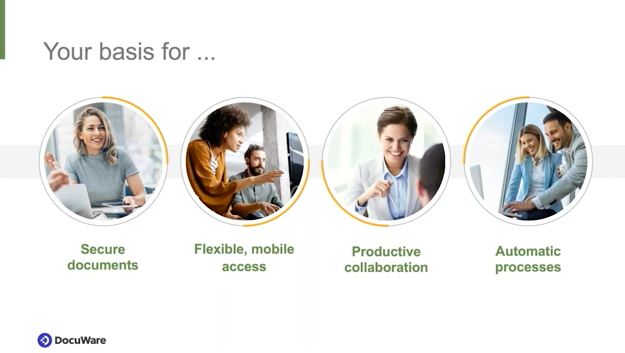By Joan Honig – Docuware: According to DocuWare market research, which surveyed more than 1,200 employees in the United States (US) and 1,400 in the United Kingdom (UK), over 70% of US businesses and 83% of UK businesses say that they use electronic signatures for some, many or most business processes. As a global company, we see the demand for e-signatures, and we wanted to find out more about what is stopping wider adoption; because even among these adopters, implementation of electronic signatures is often far from comprehensive, and some people are unfamiliar with the technology that makes it possible.
 All our respondents are authorized to sign documents on behalf of their companies, so they are the ones who know the pain points that result from the lack of an e-signature solution. To keep it simple, the rest of this blog will focus on what our US respondents said because the sentiment regarding adopting e-signature and the obstacles slowing the movement down are similar in both markets. However, find more details about our UK survey by checking out these infographics for an illustrated overview of survey results in both the UK and US. We’d love to share our findings with you!
All our respondents are authorized to sign documents on behalf of their companies, so they are the ones who know the pain points that result from the lack of an e-signature solution. To keep it simple, the rest of this blog will focus on what our US respondents said because the sentiment regarding adopting e-signature and the obstacles slowing the movement down are similar in both markets. However, find more details about our UK survey by checking out these infographics for an illustrated overview of survey results in both the UK and US. We’d love to share our findings with you!
What are electronic signatures?
There are a variety of options that fall under the electronic signature umbrella including:
- Signing a document by typing in your name and some other identifying data, such as your ID number
- Signing a digital document with your actual signature via a stylus, or by using your finger on a touchscreen
- Signing with credentials, which might require biometrics, password entry or encryption and coordination with a verified Trust Service Provider (TSP).
The last option is the most secure and recommended for businesses, especially when dealing with contracts or other items that involve compliance.
How do electronic signatures work?
 This varies according to the option you’re using. If you’re simply signing a digital document with a stylus, as you would at the cash register in most stores today, the image of the signature is captured and appended to the document However, more advanced e-signatures use verification technology to ensure that signatures are authentic and secure. These signatures provide audit trails, encryption and other backend tools to ensure authenticity.
This varies according to the option you’re using. If you’re simply signing a digital document with a stylus, as you would at the cash register in most stores today, the image of the signature is captured and appended to the document However, more advanced e-signatures use verification technology to ensure that signatures are authentic and secure. These signatures provide audit trails, encryption and other backend tools to ensure authenticity.
Here’s a quick look at these processes work:
- A document is sent to a stakeholder and requires a signature
Click Here to Read the Rest
SOURCE DocuWare
DocuWare Releases Survey on State of Electronic Signatures in US Businesses


